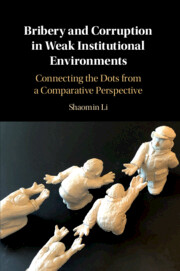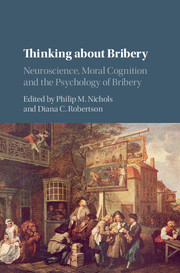Bribery and Corruption in Weak Institutional Environments
Drawing on twenty years of research and observations, Li explains how bribery and corruption are carried out in countries with weak institutional environments, and how these activities become globalized. By distinguishing rule-based, relation-based and clan-based governance, this book offers a novel explanation to the age-old puzzle of why some countries thrive despite corruption. It also sheds lights on the symbiotic roles corruption and anticorruption campaigns play in maintaining dictatorships. Applying cost-benefit analysis to different governance environments, Li argues that as non-rule-based economies expand, the transition from relying on private relationships to relying on public rules is inevitable. However, by highlighting the globalization of corruption by non-rule-based countries, this book warns against the potential threats and consequences of bribery by powerful dictatorial governments. This book will appeal to scholars, analysts and graduate students studying corruption, as well as policymakers, business professionals and executives seeking insights into the characteristics of bribery and corruption within different institutional settings.
- Introduces three types of governance environment: rule-based, relation-based, and clan-based, and how they interact with corruption to affect economic development
- Offers a theoretical explanation on why some countries thrive despite rampant corruption
- Calls attention to the potential threat of powerful countries attempting bribery and corruption on the global stage
Reviews & endorsements
'Professor Shaomin Li is a leading management scholar who pioneered the use of relation based vs. rule based institutional view of societies and its impact on corruption, bribery, and international business. Li brings his deep knowledge from sociology to show why, how and when bribery and corruption have a negative impact and offers policy suggestions for combating this. It is a must-read for students and scholars of business and economics as well as those interested to have a deep understanding of the phenomenon.' Ilan Alon, Universitetet i Agder, Norway
'Shaomin Li is the world's leading expert on the governance system in weak institutional environments. In Bribery and Corruption in Weak Institutional Environments, he provides an innovative and interesting explanations why bribery and corruption are prevalent in emerging markets and how they affect business, social, and political dynamics. This is a must-read for managers and researchers to understand the behaviors of fast-growing emerging market multinationals.' Sam Park, Willamette University, Oregon
'In Bribery and Corruption in Weak Institutional Environments, Shaomin Li advances an original theory that connects corruption and key institutional variables such as political competition, rule of law, and scope of government. His analysis of the different dynamics in rule-based and relation-based systems is both insightful and thought-provoking. Combining comparative empirical evidence, robust statistical analysis, and a lucid writing style, Li's book is a major contribution to the literature on corruption and its impact on economic activities.' Minxin Pei, author of China's Crony Capitalism
'Using a comparative approach, Li provides a new and insightful analysis of why corruption flourishes in states with weak institutions, how different forms of corruption can differentially impact a state's economic development, and why corruption is widespread despite efforts to control it.' Andy Wedeman, Georgia State University
Product details
March 2022Paperback
9781108730051
272 pages
228 × 151 × 14 mm
0.409kg
Available
Table of Contents
- Acknowledgements
- 1. Introduction: why study corruption in countries with weak institutional environments?
- 2. Bribe takers: types of corruption and their effects on efficiency
- 3. Bribe payers: why do people pay? What do they get? Can they refuse to pay?
- 4. When public rules meet private relations: the importance of governance environment
- 5. Why some societies thrive despite corruption: a relation-based explanation
- 6. Corruption and anticorruption: two legs supporting dictatorships
- 7. Paths to transition away from corruption
- 8. The globalization of corruption by countries with weak institutional environments
- 9. Conclusion: challenges and hopes in fighting corruption globally
- References
- Index.



